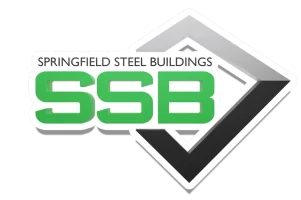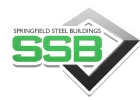What are CDM Regulations 2015?
CDM Regulations 2015, also known as Construction Design and Management Regulations, are legal requirements designed to ensure that construction work is carried out safely and efficiently. The regulations apply to all construction projects, regardless of size or duration, and aim to reduce the risk of accidents, injuries, and fatalities in the construction industry.
The primary objective of CDM Regulations 2015 is to improve health and safety in the construction industry. The regulations require that all construction work is planned, managed, and monitored to ensure that risks to workers and the public are identified, assessed, and controlled. By implementing CDM Regulations, construction companies can reduce the likelihood of accidents, injuries, and fatalities, and protect their workers and the public.
The CDM Regulations have evolved over time, with the latest update coming in 2015. The new regulations introduced a number of changes, including the replacement of the role of the CDM coordinator with the new role of principal designer. The regulations also strengthened the requirements for coordination and cooperation between all duty holders involved in the construction process.
CDM Regulations 2015 apply to all construction projects, including steel building construction. Steel building designers, contractors, and workers are all considered duty holders under the regulations and are responsible for ensuring compliance with the regulations. Failure to comply with the regulations can result in penalties, including fines, imprisonment, and prohibition notices. By complying with the regulations, steel building companies can ensure the safety of their workers and the public, and avoid costly penalties
Who do the CDM Regulations 2015 apply to?
The CDM Regulations 2015 apply to anyone involved in construction work, including clients, designers, contractors, and workers. As a steel building company, that makes Springfield Steel Buildings also subject to these regulations. Clients who commission steel building construction work must ensure that the project is carried out in compliance with the regulations, while designers must ensure that the structure is safe to build and use. Contractors must plan, manage, and monitor the construction work to ensure the safety of workers and the public. Workers also have a responsibility to work safely and follow the instructions given to them.
Each duty holder has specific responsibilities under the CDM Regulations 2015. Clients must appoint competent contractors and designers, and provide relevant information to other duty holders. Designers must eliminate or reduce risks during the design phase and provide relevant information to other duty holders. Contractors must coordinate the work and manage risks, and provide information and training to workers. Workers must follow the health and safety rules and procedures, and report any hazards or incidents to their supervisor.
The regulations apply to all types of construction work, including steel building construction. Springfield Steel Buildings must comply with the regulations to ensure the safety of its workers and the public. This includes carrying out risk assessments, providing information and training to workers, and coordinating the work with other duty holders. Failure to comply with the CDM Regulations 2015 can result in legal action, fines, and reputational damage. Therefore, it is essential for steel building companies to understand their responsibilities under the regulations and ensure compliance.
What are the key requirements of the CDM Regulations 2015?
The CDM Regulations 2015 impose certain requirements on all parties involved in a construction project, from the client to the workers on site. These requirements are designed to ensure that the project is planned, managed, and executed in a safe and responsible manner. Some of the key requirements of the CDM Regulations 2015 include:
- Duty to plan: The client, designer, and contractor must work together to plan the project, taking into account health and safety risks and how they will be controlled.
- Duty to coordinate: The designer and contractor must coordinate their work to ensure that health and safety risks are identified and managed at all stages of the project.
- Duty to manage: The contractor must manage the construction work to ensure that health and safety risks are controlled and the work is carried out safely.
- Risk assessments: The client, designer, and contractor must carry out risk assessments to identify and control health and safety risks at all stages of the project.
- Information, instruction, and training: The client, designer, and contractor must provide workers with adequate information, instruction, and training to ensure that they can carry out their work safely.
- Health and safety file: The contractor must prepare a health and safety file that contains information about the project and how health and safety risks were controlled.
A detailed list of all the requirements can be found on the HSE website
Complying with the requirements outlined in the CDM Regulations 2015 is crucial for all construction projects, regardless of size or duration. Not only can it reduce accidents and injuries on construction sites, but it can also improve communication and cooperation between duty holders. Additionally, compliance can help to reduce costs associated with accidents and delays and improve the reputation of steel building companies. Therefore, it is essential for all duty holders involved in any construction project, including small tasks such as installing a new piece of machinery or equipment, to understand and comply with the regulations to ensure the safety of everyone involved.
How does CDM 2015 affect steel building construction?
Steel building construction is subject to the Construction Design and Management (CDM) Regulations 2015, which require duty holders to plan, coordinate and manage the work, identify and control risks, and ensure the safety of workers and the public. This section outlines the key requirements for steel building designers and contractors under CDM 2015.
Steel Building Designers:
- Steel building designers must ensure that the structure is safe and that it complies with CDM 2015 regulations.
- They must identify any foreseeable risks, eliminate or reduce them as far as possible, and provide information about any remaining risks to other duty holders.
- Designers must also ensure that the steel members they use are of suitable quality and that any calculations and designs they produce are accurate and up-to-date.
Steel Building Contractors:
- Steel building contractors must plan, manage and monitor construction work to ensure that it is carried out safely and efficiently.
- They must ensure that all workers on the site are competent and have received adequate training, instruction and information to carry out their work safely.
- Contractors must also ensure that any subcontractors they use are competent and have been properly managed and supervised.
- They must provide a safe working environment and ensure that adequate welfare facilities are available on the site.
The CDM 2015 regulations also require the following actions to be taken by all duty holders involved in steel building construction:
- Duty holders must cooperate and coordinate with each other to ensure that the construction work is carried out safely and efficiently.
- They must ensure that adequate information is provided to other duty holders, including information about the structure, materials, and risks associated with the work.
- All duty holders must keep records of any decisions made, and of any health and safety risks identified and controlled.
- The CDM 2015 regulations require regular health and safety inspections and reviews to be carried out to ensure that the work is progressing safely and efficiently.
In summary, steel building construction is subject to the CDM Regulations 2015, which require duty holders to plan, coordinate and manage the work, identify and control risks, and ensure the safety of workers and the public. Steel building designers must ensure that the structure is safe, and contractors must plan, manage and monitor construction work to ensure that it is carried out safely and efficiently. All duty holders must cooperate and coordinate with each other to ensure that the construction work is carried out safely and efficiently.

Benefits of complying with CDM Regulations 2015
Complying with CDM Regulations 2015 brings several benefits to steel building companies. First and foremost, compliance ensures the safety and health of workers and the public. By identifying and controlling risks, companies can prevent accidents and injuries, leading to reduced absenteeism and lower costs associated with accidents and compensation claims. Moreover, compliance fosters better communication and cooperation between duty holders, resulting in a more efficient and effective construction process.
Another benefit of complying with CDM regulations is improved reputation. Clients are increasingly conscious of health and safety issues, and complying with CDM regulations can provide assurance to clients that steel building companies are committed to delivering safe and high-quality construction projects. This, in turn, can lead to more business opportunities and a competitive advantage over companies that do not comply with CDM regulations.
Compliance with CDM regulations can also bring cost savings. By identifying and controlling risks, companies can prevent costly accidents and rework, leading to reduced costs associated with construction delays and compensation claims. Moreover, better planning and coordination can lead to more efficient use of resources, resulting in reduced material and labour costs.
CDM Regulations and Springfield Steel Buildings
At Springfield Steel Buildings, we take the safety of our workers and clients seriously, and that’s why we adhere to the Construction Design and Management Regulations 2015. As a steel building company, we understand the importance of complying with these regulations to ensure the safe construction and delivery of our buildings.
Our team of experts is well-versed in CDM regulations and can provide advice and guidance to clients on how to comply with them. We work closely with our clients, designers, and contractors to ensure that all necessary measures are in place to mitigate risks and ensure the safety of everyone involved in the construction process.
As a client, working with Springfield Steel Buildings means you can have peace of mind knowing that your steel building project is being managed in compliance with CDM regulations. Our team will take care of all aspects of the construction process, from planning and design to installation and project management.When it comes to steel building construction, CDM regulations are an essential part of ensuring the safety and wellbeing of everyone involved. By choosing Springfield Steel Buildings, you’re choosing a company that prioritises safety and compliance with CDM regulations. Contact us today to learn more about how we can help you with your steel building project.



